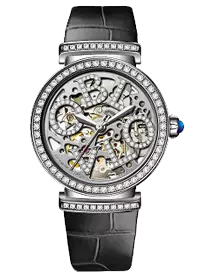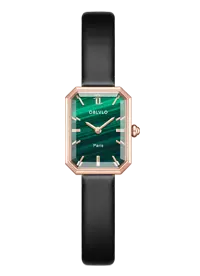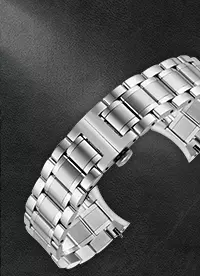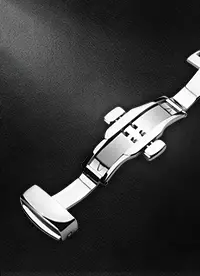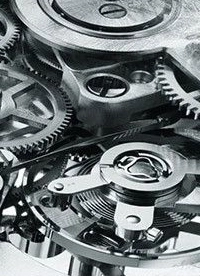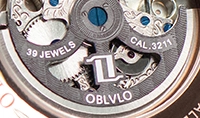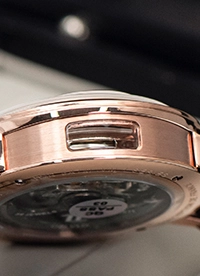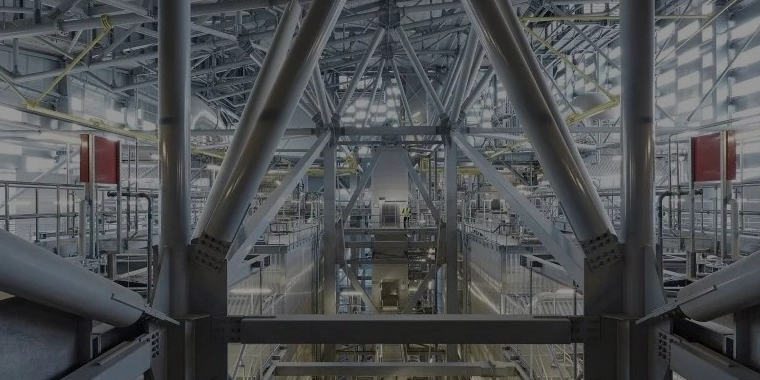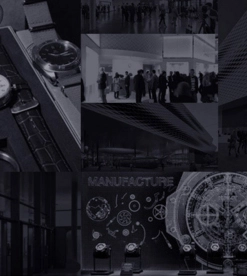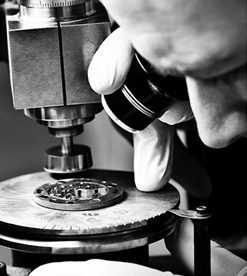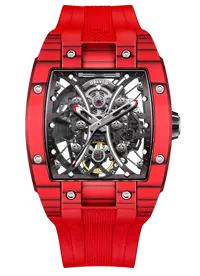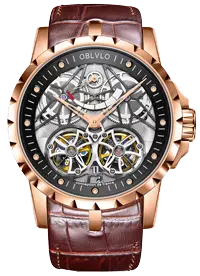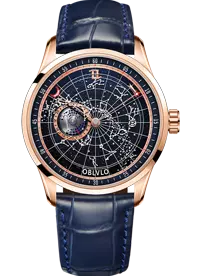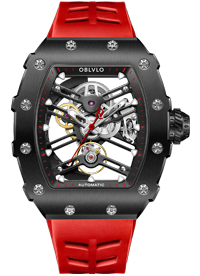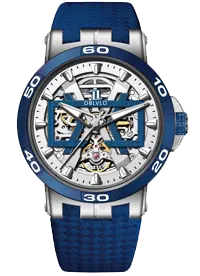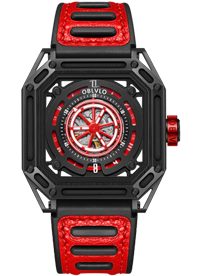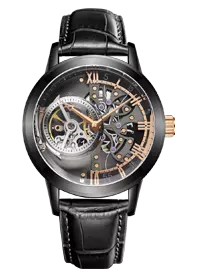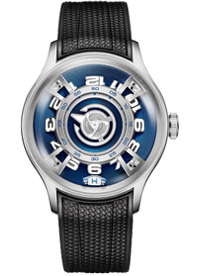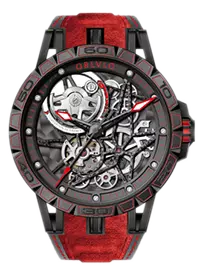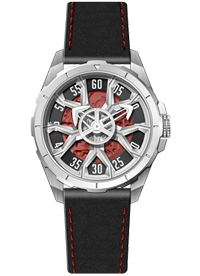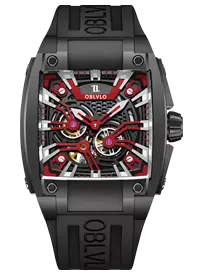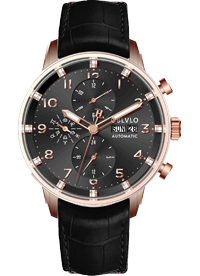Lo Scienziato
HIGH-END TECHNOLOGY AND INNOVATION.
A new version of one of the most innovative creations of the Manufacture: Luminor Tourbillon GMT with a 3D-printed Titanium case and the P.2005/T Skeletonised movement with Tourbillon regulator. With its Titanium case 3D-printed using the technique of Direct Metal Laser Sintering - technology that allows metal parts to be produced or cavities to be moulded by 3D printing layer by layer - the Luminor Tourbillon GMT is undoubtedly one of the most technical and surprising creations of the Manufacture in Neuchâtel. Presented in 2016 as the first implementation of this technology for a mechanical timepiece, Luminor Tourbillon GMT is now available in a new attractive version. The blue of the hands harmonises perfectly with the metallic tones of the Titanium case and it is also used on the flange and in the sewing of the black leather strap, giving the watch an even sportier appearance, perfect for this creation with such a high level of technical content.
The lightness of the new Luminor Tourbillon GMT is truly remarkable, particularly considering its technical features: hours, minutes, small seconds, GMT with am/pm indication, a power reserve of six days with indication of the power remaining on the back, and a Tourbillon escapement. The secret of its lightness lies in the ingenious work of minimalisation carried out by the Laboratorio di Idee at the Manufacture on the case and mainly on the sophisticated P.2005/T Titanium movement, to design a watch with the typical characteristics but with a substantially lower weight.
HIGH - TECH SOLUTIONS
DIRECT METAL LASER SINTERING
The case of the Luminor Tourbillon GMT has the diameter of 47 mm and it is made of Titanium, a material that is not only known for its hypoallergenic characteristics and resistant to corrosion but also much lighter than steel. To reduce the weight further, the case is made using a very innovative technology which enables it to be hollowed out internally, forming an extremely precise geometrical cavity without in any way compromising its water-resistance (10 bar, equivalent to a depth of about 100 metres), its solidity or its resistance to any tension or torsion to which the case may be subjected. The technology used is called Direct Metal Laser Sintering: this process builds up the case with a 3D layer-by-layer process by means of a fiber optic laser using Grade 5 powdered Titanium. The successive layers - each one only 0.02 mm thick - merge together and become completely solid, creating forms which would be impossible to achieve using traditional working methods, lower in weight and with a perfectly uniform, even appearance. All the main components of the P.2005/T calibre that equipes this exclusive watch, such as the main plates and the bridges, are entirely made of Grade 5 Titanium.
This innovative technology allows for highly complex geometries to be created directly from the 3D CAD data, fully automatically, in hours and without any tooling and afterwards shot-peening, polishing, machining, welding, heat treatment and surface treatments can be done on the object produced. The platform where printing is done consists of two tanks, each activated by a piston. A first tank is filled with metal powder and the other is empty and located at the level of the platform. The print process then starts by adding a thin layer of powder in the empty tank. The optical fiber laser (200/400 W) will then merge the metal powder. Once the material is consolidated, a second layer of powder is applied thanks to the piston system and so on until the establishment of the complete part. The layer by layer 3D printing allows very complex internal shapes and in addition, the inside part of Luminor Tourbillon GMT middle-case can be emptied.
THE CALIBRE P.2005/T
BEYOND THE HORIZONS OF TECHNOLOGY
The P.2005 mechanical movement, the hand-wound calibre with the special Tourbillon patented by , appears in the Luminor Tourbillon GMT in the P.2005/T version, Skeletonised and with Titanium bridges and plates. Thanks to the lower density of this material - about half that of the brass of which these components are normally made - the overall weight of the movement is 35% less than that of the P.2005/S skeletonised version. The ultimate lightness of the watch is both the result of the fine skeletonising of the bridges, plates and spring barrels, and of the absence of a traditional dial, since all the elements which normally comprise it are attached directly to the movement or the flange of the watch, such as the hour markers. At 9 o’clock is the small seconds dial, inside which a small indicator rotates, showing the rotation of the Tourbillon.
DISCOVER MORE
At 3 o’clock, another small dial indicates whether the central second time zone hand (GMT) refers to day or night. The long power reserve of six days is achieved by the three spring barrels connected in series, and the power remaining is shown by a special indicator on the back of the movement, visible through the large sapphire crystal porthole on the back of the watch. All this fine work of skeletonising enables the fascinating details on both sides of the watch to be admired, such as the winding and unwinding of the spring inside each barrel, the intricate interconnection of the wheel work and in particular the rotation of the Tourbillon cage, which, in the version patented by , is fundamentally different from the normal arrangement. In fact, in order to compensate more precisely for the effects of gravity on the escapement, thus achieving more accurate operation, the Tourbillon cage rotates on an axis which is perpendicular, not parallel, to that of the balance, and it makes a complete rotation every 30 seconds instead of once a minute.
THE TOURBILLON
AN INNOVATIVE INTERPRETATION
The Tourbillon is undoubtedly one of the most fascinating inventions in mechanics applied to watchmaking. Its invention is attributed to Abraham-Louis Breguet, who designed it in 1795 and patented it in 1801. This device was invented with the purpose of eliminating errors in rate (that is, faster or slower deviations in the indication of time) caused by changes in the effect of gravity on the balance, imperfections of workmanship, thickening of lubricating oil and the consequent varying friction in the different positions of the watch. To make it, Breguet constructed a cage, continuously rotating on itself, containing the balance, the escapement and the relative pivots. In this way any variation in rate which may occur when the balance is located in a particular position will be cancelled out when the balance is in the opposite position. Officine has taken up this challenge and it has even managed to make innovations in a horological speciality which has been substantially unchanged since it was first invented. In the Tourbillon, the cage containing the balance and escapement rotates on an axis which is perpendicular to the balance, not parallel with it, and unlike the traditional Tourbillon where the cage makes one rotation per minute, with the Tourbillon this rotation is completed in 30 seconds. This is an example of the extreme technical and constructional excellence, achieved by the Manufacture in Neuchâtel - Switzerland.
The P.2005 calibre family, a hand-wound calibre with a new interpretation of the Tourbillon launched by in 2007, is developed with this skeletonised version, made of Titanium. To enhance the beauty of the skeleton movement, the watch has no dial: the Arabic numerals and indexes are milled in one piece with the flange. ’s innovative Tourbillon cage that rotates (perpendicularly with respect to the balance wheel axis) once every 30 seconds instead of the traditional 60 seconds Tourbillon.






















